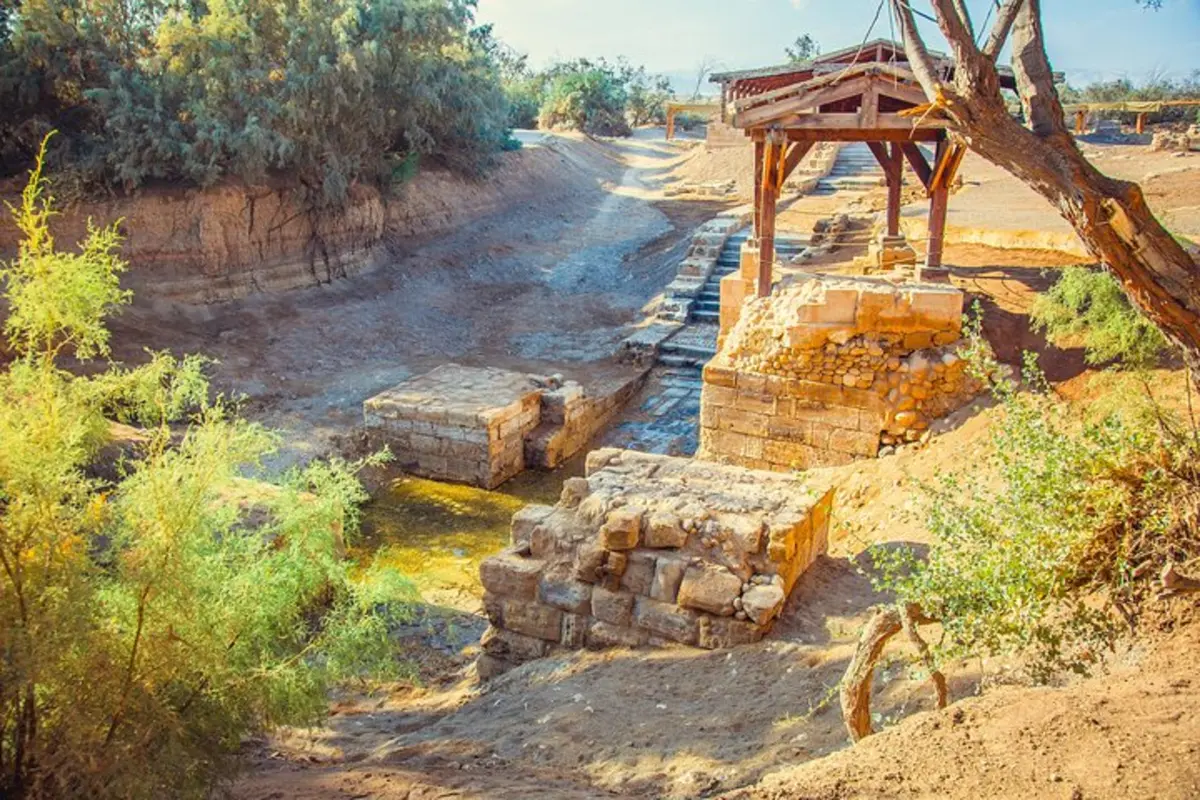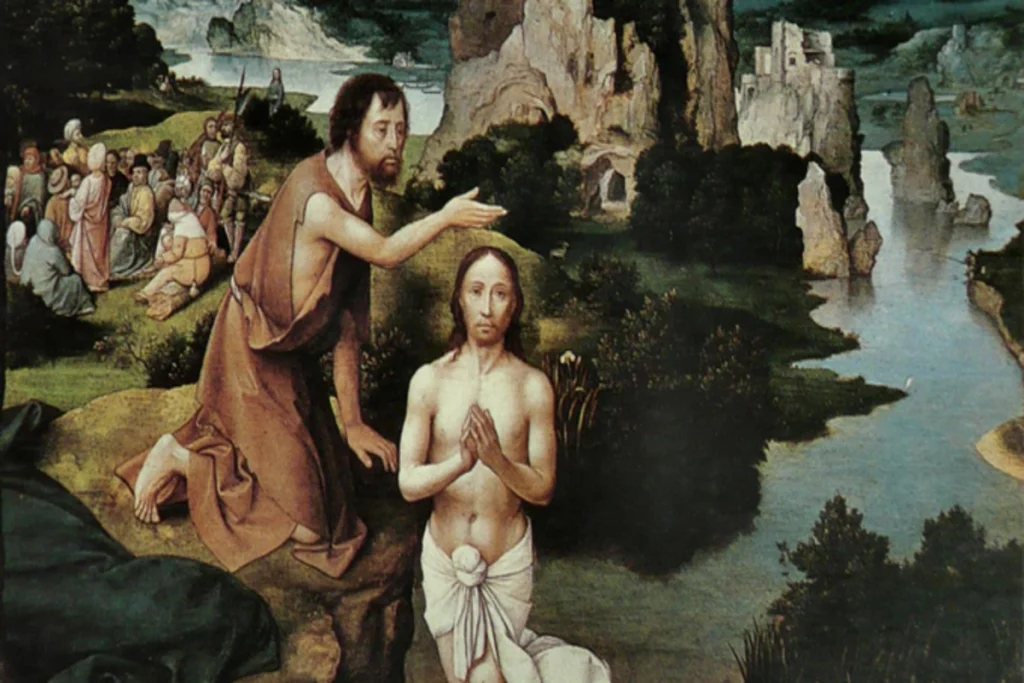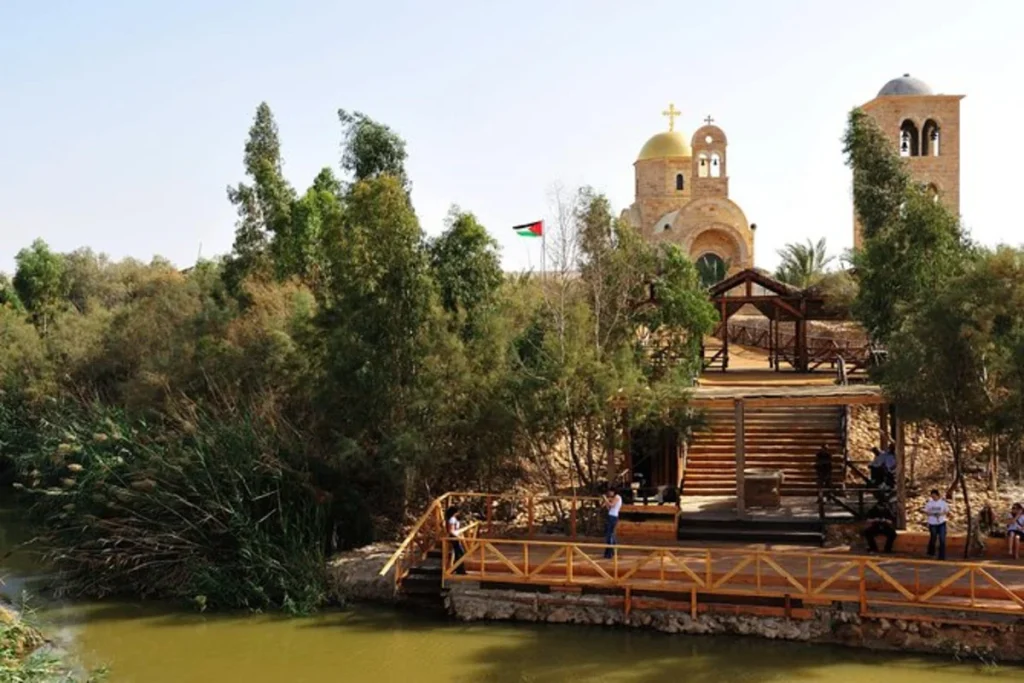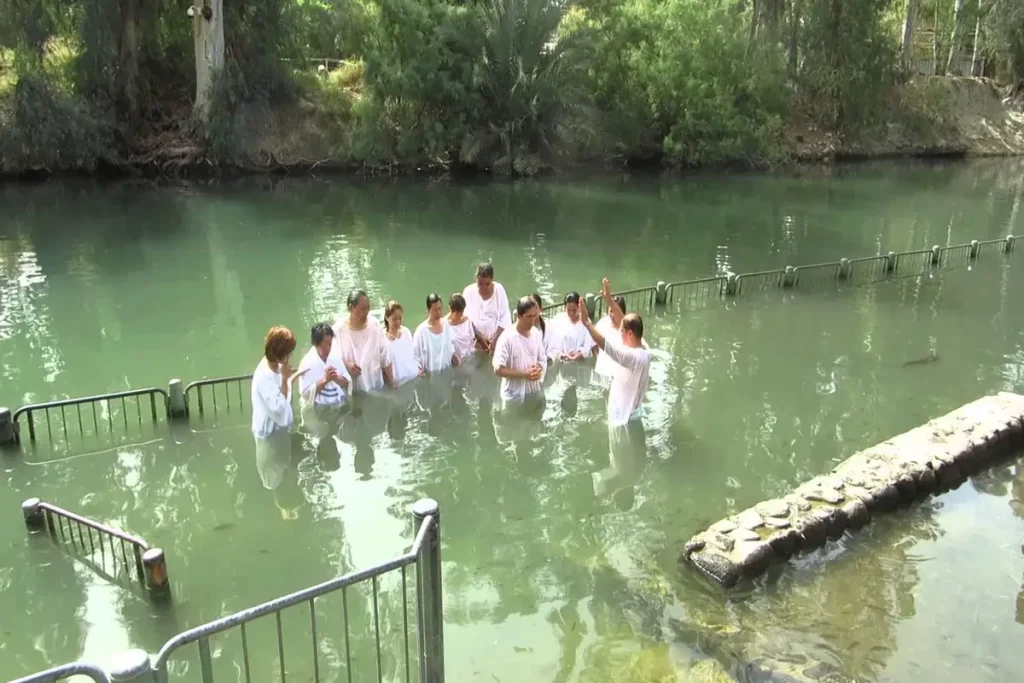The lowest nature reserve on earth !
Al-Maghtas the Baptism Site of Jesus
Bethany Beyond the Jordan

Al-Maghtas, meaning “baptism” or “immersion” in Arabic, is an archaeological and religious site on the east bank of the Jordan River in modern-day Jordan. It is widely believed to be the location where Jesus Christ was baptized by John the Baptist, making it one of the most significant Christian pilgrimage destinations in the world. Recognized as a UNESCO World Heritage Site, Al-Maghtas comprises two main areas: Tell al-Kharrar, also known as Elijah’s Hill, and the area along the river where baptismal rituals are thought to have taken place. Archaeological excavations have revealed ancient churches, chapels, monasteries, caves, and water systems, some dating as far back as the Roman and Byzantine periods. Historical texts and religious scriptures, including the New Testament, refer to this site as Bethany Beyond the Jordan, further solidifying its importance in Christian tradition. Aside from its religious significance, Al-Maghtas holds cultural and historical value, reflecting centuries of pilgrimage, worship, and settlement. Today, it remains a revered location, drawing thousands of visitors each year who seek to walk in the footsteps of Jesus and experience the spiritual and historical essence of this sacred land.
Historical and Religious Significance of Al-Maghtas
Al-Maghtas holds immense historical and religious significance, particularly for Christianity, as it is traditionally recognized as the site where Jesus Christ was baptized by John the Baptist. This event, described in the New Testament, marks the beginning of Jesus’ public ministry and is a cornerstone of Christian belief. The location, known as “Bethany Beyond the Jordan” in biblical texts, has been a revered pilgrimage site for centuries, attracting believers who seek to connect with the origins of their faith.
Historically, Al-Maghtas has been a place of continuous religious activity since at least the Byzantine period, as evidenced by the ruins of early churches, monasteries, and baptismal pools found in the area. The site also holds significance in Jewish and Islamic traditions, as it is believed to be near where the Prophet Elijah ascended to heaven.
Beyond its spiritual importance, Al-Maghtas provides valuable insights into early Christian worship and monastic life in the Holy Land. The site’s enduring religious legacy, combined with its well-preserved archaeological remains, underscores its role as a bridge between faith, history, and culture, making it one of the most sacred and historically rich locations in the world.


Archaeological Discoveries at Al-Maghtas
Al-Maghtas is a site of great archaeological importance, revealing structures and artifacts that provide insight into early Christian practices and the historical landscape of the region. Excavations have uncovered a series of ancient churches, baptismal pools, and monastic dwellings, many dating back to the Roman and Byzantine periods. Among the most notable discoveries is Tell al-Kharrar, also known as Elijah’s Hill, where early Christian pilgrims believed that the Prophet Elijah ascended to heaven.
Archaeologists have also identified a sophisticated water system, including channels, cisterns, and pools, which were likely used for baptismal rituals. The remains of a 5th–6th century church near the Jordan River further affirm the site’s role as an early Christian pilgrimage destination. Additionally, inscriptions, mosaics, and fragments of columns found in the area indicate that Al-Maghtas was an active religious center for centuries.
These discoveries not only support biblical accounts of the site’s religious significance but also offer a glimpse into the architectural and cultural influences of the time. The preservation of these ancient structures and artifacts has reinforced Al-Maghtas as a UNESCO World Heritage Site, ensuring that its historical and spiritual legacy remains intact for future generations.
Connection to Jesus and John the Baptist
Al-Maghtas is deeply connected to Jesus Christ and John the Baptist, making it one of the most sacred sites in Christianity. According to the New Testament (Matthew 3:13-17, Mark 1:9-11, Luke 3:21-22, John 1:28-34), Jesus was baptized by John the Baptist in the Jordan River at a place known as Bethany Beyond the Jordan. This event is considered a pivotal moment in Christian theology, as it marks the beginning of Jesus’ public ministry and is accompanied by the divine revelation of the Holy Trinity—when the Holy Spirit descended like a dove and God’s voice declared Jesus as His Son.
John the Baptist, known for his mission of calling people to repentance and baptizing them in the Jordan River, carried out much of his work in this region. The site of Tell al-Kharrar (Elijah’s Hill) is believed to be where John lived and preached. Many scholars and religious historians agree that early Christians identified this area as the authentic baptismal site, and archaeological findings, including ancient churches and baptismal pools, further support this tradition.
The connection between Jesus and John the Baptist at Al-Maghtas highlights the site’s profound spiritual significance. It continues to be a major pilgrimage destination for Christians worldwide, where visitors seek to experience the sacred waters of the Jordan River and walk in the footsteps of Jesus.
UNESCO World Heritage Recognition
Al-Maghtas was officially designated as a UNESCO World Heritage Site in 2015, recognizing its exceptional historical, religious, and cultural significance. This prestigious recognition affirms the site’s authenticity as the biblical location of Bethany Beyond the Jordan, where Jesus was baptized by John the Baptist. The designation also highlights the site’s archaeological importance, as it contains well-preserved remnants of early Christian churches, baptismal pools, monasteries, and water systems dating back to the Roman and Byzantine periods.
UNESCO’s recognition was based on Al-Maghtas meeting key criteria, including its direct association with significant historical and religious events, its well-documented pilgrimage history, and its outstanding universal value to humanity. The site has remained a major spiritual and pilgrimage destination for centuries, attracting believers from around the world.
Being a UNESCO World Heritage Site ensures that Al-Maghtas is protected and preserved for future generations. Conservation efforts focus on maintaining the site’s integrity while making it accessible to visitors in a sustainable way. This designation has also increased global awareness and tourism, further solidifying Al-Maghtas as one of the most important religious and archaeological landmarks in the world.
Pilgrimage and Tourism

Pilgrimage and Tourism at Al-Maghtas
Al-Maghtas is one of the most significant Christian pilgrimage destinations in the world, attracting thousands of visitors each year. Recognized as the site where Jesus was baptized by John the Baptist, it holds deep spiritual meaning for Christians, many of whom come to experience the sacred waters of the Jordan River. Pilgrims often participate in baptismal ceremonies, following in the footsteps of Jesus, making the site a place of profound religious reflection and renewal.
In addition to its spiritual significance, Al-Maghtas offers historical and cultural attractions. Visitors can explore ancient churches, monasteries, and baptismal pools, as well as Tell al-Kharrar (Elijah’s Hill), where John the Baptist is believed to have lived. The site’s well-preserved archaeological remains provide insight into early Christian worship and monastic life.
To support tourism, Jordan has developed facilities around Al-Maghtas, including visitor centers, guided tours, and pathways leading to key landmarks. The site is accessible from Amman and the Dead Sea, making it a convenient stop for travelers exploring the Holy Land. As a UNESCO World Heritage Site, Al-Maghtas continues to draw global attention, reinforcing its role as a bridge between faith, history, and heritage.
